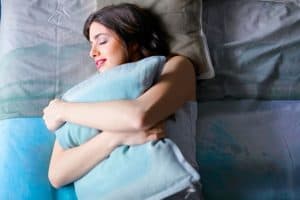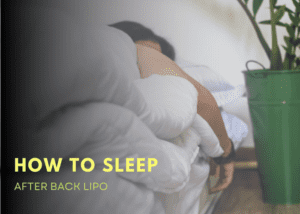Spotting a yellow stain on your mattress can be a disconcerting sight. It is an eyesore, and can be difficult to remove. But before you worry about how to clean it, it’s important to understand what caused it in the first place.
From sweat stains to urine spots, there are a variety of reasons why your mattress may have gotten stained yellow.
Let’s take a closer look at what could be causing these unsightly marks and how to treat them.
Common Sources Of Yellow Stains
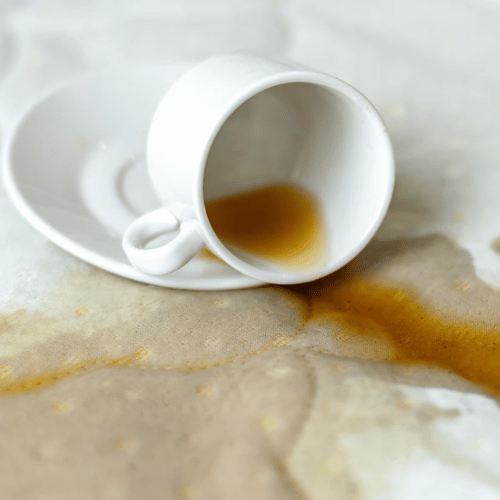
Yellow stains on mattresses are a common issue. They can appear from a variety of sources, making it hard to narrow down the exact cause. It’s important to identify the source in order to properly treat and remove the stain.
Stains can be caused by bodily fluids, sweat, food and drink spills, dirt and dust, pet accidents, mold, mildew or even just age.
- Bodily fluids such as urine or sweat can soak into a mattress and leave behind a yellow discoloration that is difficult to remove.
- Food and drinks spills can also leave behind yellow stains if they seep into the mattress.
- Dirt and dust are also common culprits of yellow stains on mattresses. If not regularly vacuumed or cleaned, these particles will settle into the fibers of the mattress over time and may cause discoloration or staining.
- Pet accidents are another possible source of yellow stains on mattresses; urine is especially difficult to remove once it has had time to set in.
- Mold or mildew may form on an older mattress that has not been adequately cleaned or aired out after use.
No matter what the source may be, identifying it is essential for treating and removing any yellow discoloration from your mattress.
Cleaning And Prevention Tips
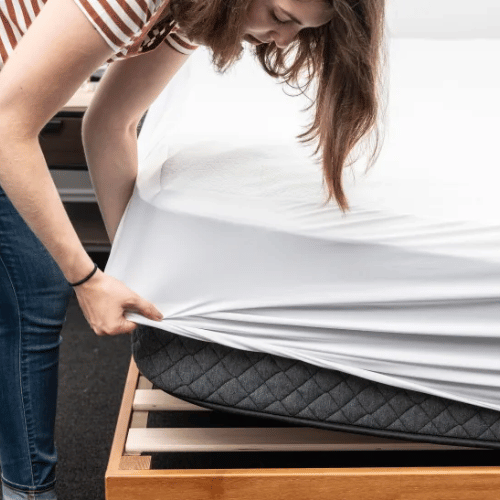
Cleaning yellow stains on mattresses can be challenging, but it’s not impossible.
The first step is to identify what caused the stain in the first place. If it’s something like sweat or body oils, try blotting with a cloth dipped in warm water and detergent.
For tougher stains, like pet urine, you may need to use a cleaning product specifically designed for removing urine from mattresses.
Once you’ve removed the stain, let the mattress dry before applying a protective spray or covering.
Prevention is key when it comes to yellowing mattresses.
Since spills and perspiration are often to blame for yellowing, use mattress protectors or sheets that are easy to launder frequently. It’s also important to keep pets off the bed and address any mold or mildew issues promptly.
Regularly airing out your mattress can also help reduce moisture buildup and prevent discoloration.
These simple steps can help keep yellow stains away from your mattress and keep you sleeping comfortably night after night.
Onward then, to exploring another potential source of those unwelcome yellows: allergens as a cause.
Allergens As A Cause
From pollen to dust mites, allergens are everywhere – even in our beds.
They can settle into the mattress fibers, where they accumulate moisture from sweat and body oils.
Over time, these combined fluids can cause yellowing or other discolorations that are difficult to remove. It’s important to take steps to reduce allergens in your home and keep them away from your bedding as much as possible.
Vacuuming regularly, washing sheets frequently, and using mattress covers are all effective preventive measures.
It’s also important to be aware of dust mite allergies if you’re experiencing yellowing on your mattress or other bedding items. These tiny creatures thrive in warm, humid environments like mattresses and pillows – making them a common cause of allergy symptoms like sneezing, coughing, and itchy eyes. Reducing humidity levels in your bedroom can help keep dust mites away while protecting your mattress from staining.
Chemical Reactions
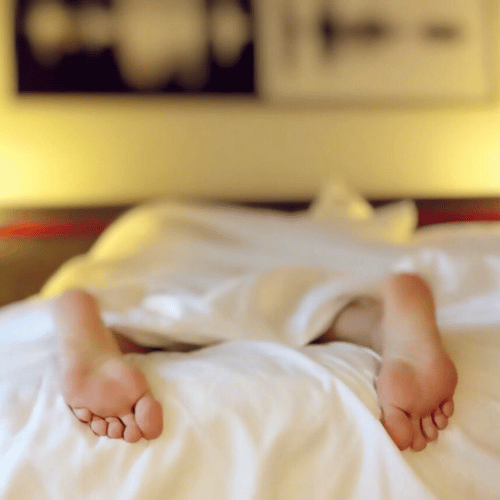
Chemical reactions can be another cause of yellowing on a mattress. Over time, certain materials such as body oils and sweat can react with the fabric or stuffing of a mattress, causing discoloration in the form of yellow stains.
This is especially true when it comes to natural fibers like cotton or wool which are more prone to staining than synthetic materials. The best way to prevent this type of staining is by regularly cleaning mattresses and using mattress covers that protect against spills and moisture.
In addition to chemical reactions, environmental factors can also contribute to yellowing on mattresses.
If your bedroom is too humid, the moisture in the air can seep into the mattress material and cause staining over time. It’s important to keep your bedroom well-ventilated and maintain moderate humidity levels between 40% and 60%.
This will help keep mold and mildew away while protecting your mattress from discoloration.
TIP: If you’re dealing with stubborn yellow spots on your mattress, spot cleaning with a damp cloth may help remove them. Be sure to test any cleaning solutions on an inconspicuous area first before applying them directly onto the stain.
Environmental Factors
Environmental factors can also be a cause of yellowing on mattresses.
Humidity, temperature and light all play a role in how fabric and stuffing react over time. For example, high humidity levels can cause moisture to seep into the mattress material, leading to discoloration.
Too much direct sunlight can also cause fading and yellowing of the fabric. Keeping your bedroom well-ventilated and maintaining moderate temperatures between 65°F and 85°F will help protect your mattress from unwanted discolorations.
Mold and mildew growth is another environmental factor that can contribute to yellowing on mattresses. These fungi thrive in warm, humid environments and often appear as dark spots or stains on fabrics like mattresses.
To prevent mold buildup, it’s important to keep your bedroom clean by vacuuming frequently and using a dehumidifier if necessary.
Spot cleaning with vinegar or baking soda solution may also help remove existing mold growth from the mattress surface.
Mildew And Mold Growth
Like a hidden enemy, mildew and mold can wreak havoc on your mattress if left unchecked. The musty odor they produce is just the start – these fungi can discolor fabrics, weaken stuffing, and even cause rot in some cases.
It’s a problem that can spread quickly, so it’s important to take action as soon as you notice any signs of mildew or mold growth.
To prevent these fungi from taking hold in the first place, adequate ventilation is key. Poorly ventilated bedrooms are prime breeding grounds for mildew and mold due to high humidity levels combined with warm temperatures.
To ensure proper airflow in your bedroom, open windows when possible and consider using an air conditioner during hot months.
If necessary, invest in a dehumidifier or fan to keep air circulating throughout the room.
It’s also important to regularly clean up spills and vacuum your mattress to prevent mildew and mold buildup before it has a chance to spread.
These fungi can be difficult to remove once established, so taking steps ahead of time will make all the difference in protecting the quality of your mattress over time.
Inadequate Ventilation
When it comes to the health of your mattress, inadequate ventilation can be a catastrophic problem.
Poor air circulation can lead to an accumulation of moisture in the fabric, making it more susceptible to mildew and mold growth.
It also creates a hospitable environment for dust mites and other pests, meaning your mattress is at greater risk of damage from these invaders.
What’s more, inadequate ventilation can contribute to unpleasant odors forming on the surface of your mattress over time.
This may be due to sweat or other bodily fluids seeping into the fabric, leading to unsightly yellow stains that are difficult or impossible to remove without professional cleaning services.
No matter how much effort you put into caring for your mattress, insufficient air circulation will always be an issue if proper precautions aren’t taken.
To keep your mattress clean and odor-free, make sure you take steps to properly ventilate your bedroom every so often.
By ensuring adequate airflow in your sleeping quarters, you can help prevent issues such as mildew and mold growth as well as yellow stains caused by urine or other bodily fluids.
Urine Or Bodily Fluids
One of the most common causes of yellow stains on mattresses is urine or other bodily fluids.
Whether it’s caused by an accident during a child’s potty training phase or an adult struggling with incontinence, urine can seep into the mattress and become difficult to remove without professional help.
The longer these fluids are left in place, the more likely they are to cause permanent staining and discoloration of the fabric.
As such, it is important to take steps to clean up any messes as quickly as possible. Here are four key tips for effectively removing urine stains from a mattress:
- Absorb as much liquid as possible using paper towels or a cloth.
- Gently blot the area with a solution made from one part white vinegar and two parts warm water.
- Allow the solution to sit for several minutes before blotting again with cold water.
- Finally, use a fan or hairdryer set on low heat to dry out the area thoroughly before remaking your bed as usual.
By following these steps, you can help keep your mattress looking its best for years to come and reduce your risk of developing unsightly yellow stains caused by urine or other bodily fluids.
Frequently Asked Questions
What Kind Of Products Should I Use To Clean A Yellow Stain?
The yellow stains on your mattress may be quite the eyesore, but fear not! Cleaning them up is relatively straightforward – if you know what to do. To start, let’s take a look at the products you should use to remove those pesky blemishes.
We’ll begin with the basics: a good old-fashioned vacuum cleaner. This time-honored tool will help get rid of any dirt or debris that are cluttering up your mattress, allowing it to look as good as new. But if you’re dealing with a more persistent stain, then there are other products you can use to tackle the problem head-on.
First off is an enzyme cleaner.
These work by breaking down proteins found in certain types of stains, making it easier to fully remove them from the fabric they’re stuck in.
Secondly, laundry detergent can also be used to take care of tougher stains like grease or food residue.
For this job, opt for a detergent that contains enzymes for best results.
Thirdly, white vinegar or baking soda can be used as alternatives if you don’t have any specialized cleaners lying around – just make sure to dilute them with some water so they don’t damage the fabric of your mattress too much!
And lastly but not least, hydrogen peroxide is another great choice for tackling tougher yellow stains on mattresses; just make sure to test it out on an inconspicuous area first.
Overall, these four items – vacuum cleaner, enzyme cleaner, laundry detergent and hydrogen peroxide – can be used to effectively clean away those stubborn yellow stains on your mattress with minimal effort and fuss.
So no matter how bad it looks right now, rest assured knowing that you’ll soon have a fresh and spotless bedding set back in no time!
How Do I Know If My Yellow Stain Is Caused By Bodily Fluids?
Figuring out the cause of yellow stains on a mattress can be tricky. But, if you suspect the stain is caused by bodily fluids, there are certain steps to take. Here’s what you should do:
1. First, inspect the area around the stain closely. If it appears dark and concentrated in one spot, this could be an indication that it is indeed caused by bodily fluids.
2. Next, smell the area around the stain. Unpleasant odors may indicate urine or other liquids have been spilled on your mattress.
3. Lastly, consider how long ago the stain appeared. If it’s relatively recent, this could also be a sign that it is in fact due to bodily fluids.
If your suspicions are correct, it’s important to act quickly – not only for hygienic purposes but also because these types of stains are more difficult to remove than other types of stains.
Make sure to use products that are specifically designed for cleaning bodily fluid stains and follow all directions carefully when using them.
Don’t forget to use protective gloves and mask while cleaning as well!
Remember that prompt action is key when trying to remove these types of stains from your mattress so don’t wait too long or else you might end up with an unpleasant odor permanently embedded in your mattress!
Can I Prevent Yellow Stains From Forming On My Mattress?
Preventing yellow stains on a mattress is an important task. It requires diligence and the right cleaning products to keep mattresses looking their best. Here are some tips to help you avoid yellow stains on your mattress:
Maintenance:
a. Vacuum regularly to remove dust, dirt, and allergens that can accumulate over time.
b. Spot clean any spills or accidents as soon as they occur.
Cleaning:
a. Use a mild detergent and warm water to spot clean stains from the mattress surface.
b. Avoid harsh chemicals that could damage fabric or cause discoloration.
To ensure you’re taking the proper steps, refer to the care instructions for your specific type of mattress.
Following these guidelines will help you keep your mattress free of yellow stains and looking its best for years to come.
Are There Any Health Risks Associated With Yellow Stains On Mattresses?
Yellow stains on mattresses are an unexpected and unpleasant sight. According to a survey, 28% of mattress owners have seen them in the past year. This raises the question of whether these stains pose any health risks.
The answer is yes, yellow stains on mattresses can be hazardous to your health. Yellow stains indicate that sweat, body oils, and other bodily fluids have been trapped in the mattress for an extended period of time, creating a breeding ground for bacteria and fungi.
Inhaling or touching such substances could lead to serious illnesses like skin rashes and respiratory problems.
It’s important to prevent yellow stains from forming on your mattress in the first place.
Regularly airing out your mattress by opening windows or using a dehumidifier can help reduce moisture levels and stop mildew from growing.
To avoid trapping sweat in your mattress, use a waterproof cover or change bedding often. If you do find yellow stains on your mattress, it’s best to replace it as soon as possible.
Taking steps to protect yourself from yellow stain-related health risks is essential for keeping you and your family safe.
Investing in a high-quality mattress and taking measures to keep it clean will ensure you get the restful sleep you need without worrying about potential harm from yellow stains.


